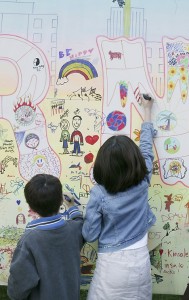Can Young Children Benefit From Drawing Lessons?
Is anyone able to sit down and play the piano beautifully without having received lessons? Can one read automatically without being taught? No. All of us who have acquired these skills have learned them early in our lives through a structured program of instruction. This is true not only for music and reading but for all other artistic subjects. Why is it then that we don’t provide instruction for drawing?Young children are often overlooked by the traditional drawing curriculum that tends to focus on children over twelve or thirteen years old, who are blessed with natural talent and who can usually draw already. School teachers do craft projects and provide younger children with free time to do symbolic stick-figure-style drawings. Yet, unless children are given instruction and guidance, before they stop symbolic drawing they will assume they weren’t born with the ability to draw realistically. The closer they get to preteen years, the more they will resist the activity and not want to try at all.However, if children are given structured lessons in realist drawing from the time they are very young, they will quickly graduate to sophisticated and skilled drawings right after giving up their symbolic drawing styles. Everybody can enjoy drawing, but sometimes it’s hard to know where to begin. Many people make the mistake of drawing what they think something looks like, instead of really looking at it carefully first. A set of simple general principles are required. Just as a composer and musician can break things down into their basic components, so too by breaking down a subject into a series of simple elements a child can analyze what they ‘see’ and then put it into drawing. By utilizing the basic components of shape a student is able to create any possible image with the fewest number of lines. This has been termed the “alphabet of shape” that consists of five basic elements; circle, dot, straight line, curved line and angle. Any object that a student wants to draw can simply be analyzed in terms of how these elements of shape are combined. Thus children can be trained to see each general shape and then be free to interpret the detail in any way they wish. Thus, every child is able to achieve realistic representation of the subject drawn and still be creatively unique.Drawing lessons can begin when a child is just 4 years old. The lessons give beginners of any age the basic information they need to analyze and reproduce what they see. Besides the obvious benefit of learning to draw, students also develop fine motor skills, problem-solving abilities and improved concentration. Case studies have also shown how children, who have undertaken tuition in drawing, within a positive, non-judgmental, non-competitive environment, have made marked improvements in areas such as disorientation or misrepresentation of images, hyperactivity, communication ability and reading readiness, introverted behavior, resistance to participation and inability to observe or remember instruction sequences.



This Post Has 1 Comment